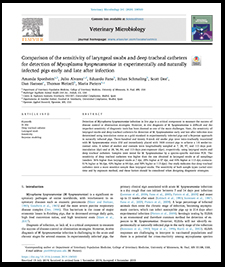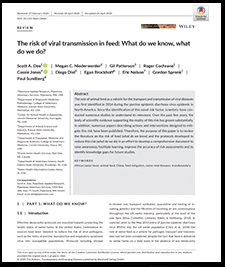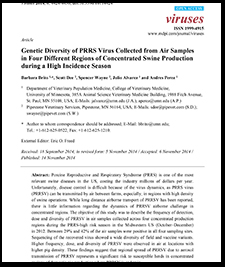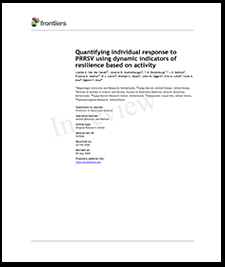Comparison of laryngeal swabs and deep tracheal catheter sensitivity for detection of Mycoplasma hyopneumoniae
The importance of diagnosing M. hyopeumoniae is critical and difficult with available methods. Our study details the sensitivities of laryngeal swabs and deep tracheal catheters for early and late detection.
The risk of viral transmission in feed: What do we know, what do we do?
Since the role of animal feed as a vehicle for transport and transmission of viral disease was first identified in 2014, scientists have conducted numerous experiments. This paper reviews the current literature on the risk of feed and the protocols developed to reduce this risk.
Genetic Diversity of PRRS Virus Collected from Air Samples
The objective of this study was to describe the frequency of detection, dose and diversity of PRRSV in air samples collected across four concentrated production regions during the PRRS-high risk season in the Midwestern US.
Regional spread of PRRSV due to aerosol transmission of PRRSV represents a significant risk to susceptible herds.
Quantifying individual response to PRRSV using dynamic indicators of resilience based on activity
The aim of this study was to investigate the potential of using DIORs of activity, such as average, root mean square error (RMSE), autocorrelation or skewness as indicators of resilience to infection with the Porcine Reproductive and Respiratory Syndrome Virus (PRRSV).
Results from this study showed that post-challenge DIORs of activity can be used to quantify resilience to PRRSV challenge.




